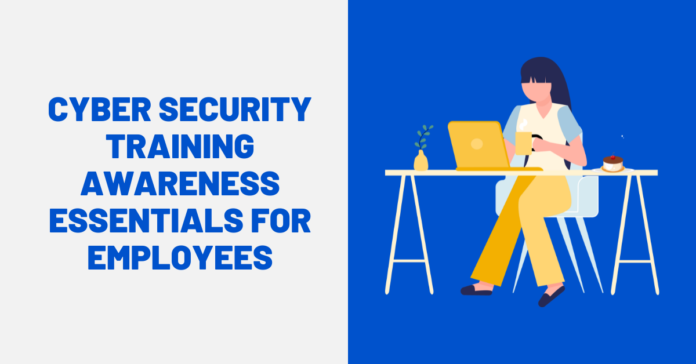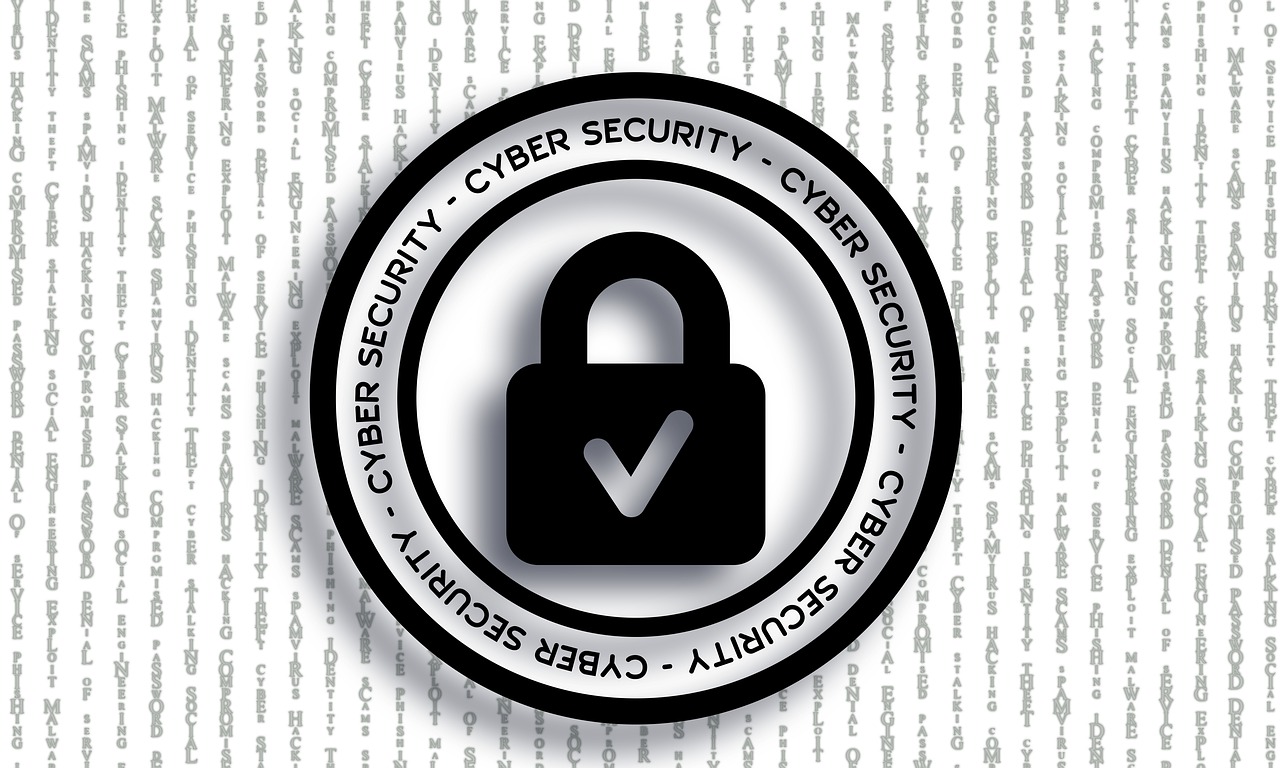Here, I will show you 7 cyber security training awareness essentials for employees…
Despite significant technical breakthroughs, cyber security challenges will pose rising dangers to organizations as more individuals started working remotely.
And the accompanying financial downturn has hampered organizations’ capacity to adopt and maintain adequate cyber security measures.
Consequently, many firms’ data remains unsecured, exposing them to data breaches and cyberattacks.
These threats alone necessitate cyber security awareness training for staff. Investigate why these programs are so important in today’s workplace—at home and in the office.
Then, discover seven cyber security training awareness for increasing the success of your programs with your employees.
Table of Contents
1. A Hands-on Approach To Learning
When it comes to cyber security awareness, the theory you educate your staff on is only useful if they put it into practice.
Your cyber security awareness training program for employees must contain more than just training for cyber attack prevention to avoid assaults like phishing emails. Training alone ensures just the introduction of instructional content.
Rather, convert the information you want your program to instill in your staff into learning. Putting such information into practice ensures that staff use it correctly and follow the teachings.
This method combines procedural learning with relevant, contextual, and instantaneous feedback. As a result, everyone engaged understands the subject’s mastery while developing memories that modify habits and prevent mistakes on the spot.
2. Predictive Analytics
Predictive insider-persona analytics raise the bar for your targeted persona groupings. You may use analytics to find and proactively manage high-risk personas based on certain criteria.
This allows you to identify better which organizations or individuals are more likely to pose risks before they appear and then take measures to avoid them entirely.
Moreover, you may harness data to develop the predictive insights you need to optimize your workers’ learning experiences by using breakthroughs in machine learning.
You may boost performance by providing thorough cyber security awareness staff education that incorporates contextual delivery at frequent intervals.
READ ALSO: How AI Is Transforming Web Design: Tips to Stay Ahead in 2025
3. Cultural Change
A more comprehensive approach to cyber security training awareness eliminates the neglect and co-opting that frequently contribute to human mistakes. It promotes a culture shift that directly addresses employee beliefs and attitudes.
This personal work focuses on the variables that encourage hostile conduct and how your employees see them. You cultivate an employee engagement culture rather than one in which people merely go through the motions.
Continuously distribute the previously described awareness “bits” to improve your organization’s cyber security culture successfully. Ensure they are effective, simple, entertaining, and effortlessly integrate training into your workers’ routines.
An interactive and instructive cyber security email newsletter might offer and quiz staff on essential topics, reinforcing their learning at frequent intervals.
You may automate the distribution of these newsletters and monitor their progress online to see how effective your cultural revolution is.
4. Ongoing Cyber Security Education For Employees
The more you educate your staff on cyber security risks and how to mitigate them, the more likely they will be to safeguard your business and assets from malware, phishing, and other attacks.
Investing in your workers’ cyber literacy raises their awareness of the significance of their work, pushing them to achieve better and stay on board in the long run.
Awareness alone is not a high enough aim for cyber security training. Alternatively, top-performing cyber security training awareness programs give multiple situations that assist workers in absorbing what they must stay aware of and why they should modify those security-related habits that result in assaults and losses.
These programs are not one-time events. Instead, they are repeated while incorporating fresh and relevant insights and information.
READ ALSO: Identity And Access Management Takes Up A Month Every IT Year
5. Risk-based Persona Groupings
Certain workers are more vulnerable to cyberattacks than others. In reality, fewer than 20% of workers in a company are statistically responsible for the majority of human error-induced loss.
Run simulations many times a year to identify high-risk personnel. Then, use a precise method and algorithm that can effectively quantify risk.
You’ll find it simpler and more successful to plan and execute highly tailored interventions for each segment based on their risk level if you understand the different microsegments within your workforce base.
Micro-segmentation provides a more detailed image of your organization’s risk group identities. They provide insights so that you can:
- Engage in more cost-effective monitoring by overseeing groups rather than individuals while safeguarding individual workers’ privacy in the workplace.
- Determine more specific courses of action for each employee category and the risks connected with them.
- Improve your understanding of the varying degrees of risk that various workers “welcome” into the business.
6. Real-time Feedback
Real-time feedback is an industry norm to engage employees. It assists them in internalizing and remembering how and why to keep on top of cyber security efforts while avoiding human mistakes.
By offering feedback, you demonstrate the security gap between your workers and the business, demonstrating the necessity for cyber security training awareness in the first place.
Even better, when security incidents include real-time feedback, staff quickly know what went wrong and how to avoid such scenarios in the future.
Employees may “nibble” on bite-sized learning experiences when they are extremely relevant to their everyday tasks using this just-in-time method.
This way, people can quickly recognize the need for the specific training you’re offering and interact with it when it counts the most.
READ ALSO: Developer Experience First: Making SonarQube vs Veracode Fast and Painless
7. Scientific Training Method
Lastly, for long-term success, use a scientific training strategy. By combining learning skills, automation, and data science, this solution makes security awareness learning simple and successful for organizations.
It employs a machine learning platform to improve every employee’s learning opportunity daily.
You may use a scientific training system to:
- Provide constant learning without boredom to keep it front of mind.
- Use a variety of meaningful stimuli to develop solid cognitive patterns.
- Train at variable intervals based on where each person is on the learning curve.
- Analyze employee data to boost performance.
- Improve performance by optimizing contextual delivery.
- Use just-in-time learning to make learning more meaningful and remembered.
This strategy combines many of the recommendations in this essay to deliver a comprehensive security awareness solution.
Conclusion
Use these seven aspects in cyber security training awareness programs for every employee to prevent hostile assaults caused by human mistakes.
As a result, your employees will feel more empowered and engaged to safeguard your important components and bottom line.
INTERESTING POSTS
- 6 Ways To Optimize Your DevOps Team Productivity
- What Should Security Awareness Training Include?
- Web skimming: Hackers Target Online Shoppers with Google Analytics
- 6 Ways To Protect Your Business From Phishing Attacks
- Integrating Security Awareness Training Into Employee Onboarding
- 2024 Cybersecurity: The Rise of CyberAttacks
- 20 Online Security Tips For Remote Workers
- 5 Cybersecurity Tips For Small Businesses
About the Author:
Daniel Segun is the Founder and CEO of SecureBlitz Cybersecurity Media, with a background in Computer Science and Digital Marketing. When not writing, he's probably busy designing graphics or developing websites.












